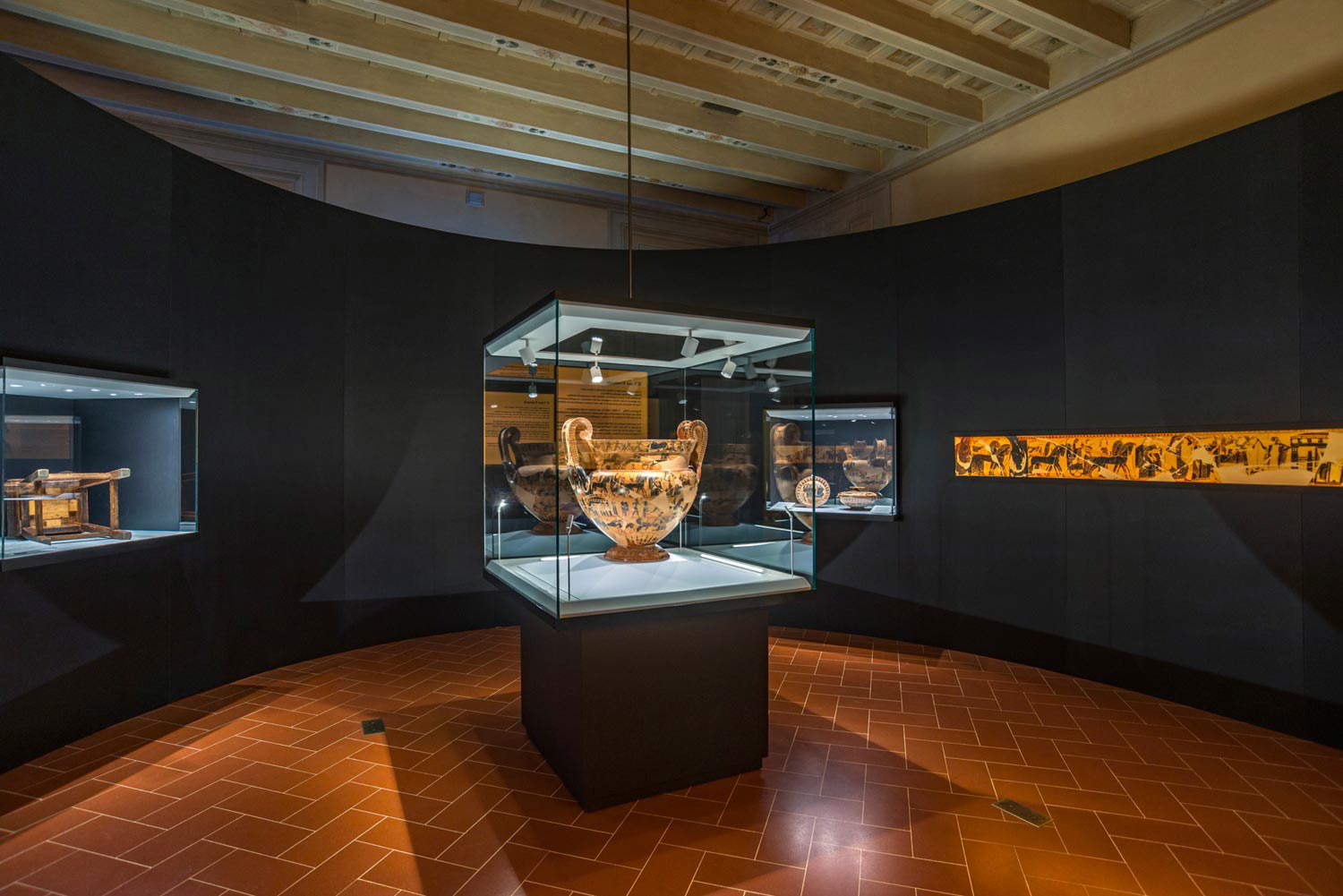The Sangiuliano reform is taking more and more shape. Yesterday, in fact, the Council of Ministers preliminarily approved the outline of the Dpcm bearing “Regulations concerning amendments to the Regulation of Organization of the Ministry of Culture referred to in Prime Ministerial Decree No. 169 of December 2, 2019,” which carries out the reorganization of Italian state museums strongly advocated by Minister Gennaro Sangiuliano.
As we anticipated, with the reform, autonomous museums will increase in number: from the current 44 to the new 60, as a result of the amalgamation of the Gallerie dell’Accademia and the Bargello Museums, which will become a single institute, and the introduction of 17 new autonomous institutes. There will also be three new institutes of general executive level: the Royal Museums in Turin, the National Archaeological Museum i Naples and, indeed, the Galleria dell’Accademia-Musei del Bargello in Florence, which merges the two previously non-general executive level structures.
The proposed reform received a favorable opinion from the Higher Council for Cultural and Landscape Heritage in recent weeks. The preliminary draft of the decree scheme will be sent to the Council of State for its opinion before final approval in the Council of Ministers.
“The autonomy granted to some major museums,” says Minister Sangiuliano, “is an operational choice that allows them to raise their quality and usability. Being autonomous means having a managerial management that allows quick decisions with a view to the protection and promotion of the structures. This measure also recognizes the value of major Italian cultural sites that, in fact, due to the importance of the collections and works housed, have already won great prominence in the field.”
Below is the list of the new autonomous institutes of non-general executive level:
1. Royal Savoy Residences;
2. National Archaeological Museums of Venice and the Lagoon;
3. National museums of Ferrara;
4. National museums of Ravenna;
5. National Archaeological Museum of Florence;
6. Florentine villas and monumental residences;
7. National museums of Pisa;
8. National museums of Lucca;
9. Archaeological parks of the Maremma;
10. Pantheon and Castel Sant’Angelo;
11. Museums and archaeological parks of Praeneste and Gabii;
12. Monumental villas of Tuscia;
13. National Archaeological Museum of Abruzzo in Chieti;
14. Vomero national museums;
15. Museums and archaeological parks of Capri;
16. Swabian castle of Bari;
17. Museums and archaeological parks of Melfi and Venosa.
The Girolamini Library and Monumental Complex, already endowed with special autonomy, moves from the competence of the General Directorate for Libraries and Copyright to that of the General Directorate for Museums.
Below is the complete list of the 60 autonomous institutes:
(a) general management level (first tier):
1) Royal Museums of Turin;
2) Pinacoteca di Brera;
3) Gallerie dell’Accademia in Venice;
4) Uffizi Galleries;
5) Academy Gallery of Florence and the Bargello Museums;
6) Archaeological Park of the Colosseum;
7) Roman National Museum;
8) Borghese Gallery;
9) Vittoriano and Palazzo Venezia;
10) National Gallery of Modern and Contemporary Art;
11) National Archaeological Museum of Naples;
12) Museum and the Royal Woods of Capodimonte;
13) Archaeological Park of Pompeii;
14) Royal Palace of Caserta;
(b) non-general management level (second tier):
1) Royal Residences of Savoy;
2) National Museums of Genoa;
3) Ducal Palace of Mantua;
4) National Archaeological Museums of Venice and the Lagoon;
5) Historical Museum and Park of Miramare Castle;
6) National Museum of Digital Art;
7) Monumental Complex of the Pilotta;
8) Estensi Galleries;
9) National Museums of Ferrara;
10) National Museums of Ravenna;
11) National Picture Gallery of Bologna;
12) National Archaeological Museum of Florence;
13) Florentine villas and monumental residences;
14) National picture gallery of Siena;
15) National Museums of Pisa;
16) National Museums of Lucca;
17) Archaeological parks of the Maremma;
18) National Gallery of Umbria;
19) National Gallery of the Marches;
20) Pantheon and Castel Sant’Angelo;
21) National Galleries of Ancient Art;
22) Etruscan Museum of Villa Giulia;
23) Museum of Civilizations;
24) Archaeological Park of the Ancient Appian Way;
25) Archaeological Park of Ancient Ostia;
26) Hadrian’s Villa and Villa d’Este;
27) Museums and archaeological parks of Praeneste and Gabii;
28) Archaeological park of Cerveteri and Tarquinia;
29) Monumental villas of Tuscia;
30) Abruzzo National Museum of L’Aquila;
31) National Archaeological Museum of Abruzzo in Chieti;
32) Sepino archaeological park and the Samnite Museum in Campobasso;
33) Royal Palace of Naples;
34) Library and the Girolamini Monumental Complex;
35) Vomero National Museums;
36) Museums and archaeological parks of Capri;
37) Archaeological Park of Herculaneum;
38) Campi Flegrei archaeological park;
39) Archaeological parks of Paestum and Velia;
40) Swabian Castle of Bari;
41) National Archaeological Museum of Taranto;
42) National Museums of Matera;
43) Museums and archaeological parks of Melfi and Venosa;
44) Archaeological parks of Sibari and Crotone;
45) National Archaeological Museum of Reggio Calabria;
46) National Archaeological Museum of Cagliari.
Image: National Archaeological Museum of Florence
 |
| Council of Ministers approves Sangiuliano reform. 17 new autonomous museums on the way. |
Warning: the translation into English of the original Italian article was created using automatic tools. We undertake to review all articles, but we do not guarantee the total absence of inaccuracies in the translation due to the program. You can find the original by clicking on the ITA button. If you find any mistake,please contact us.